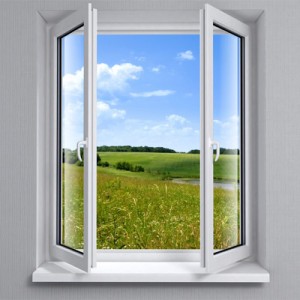5 Steps to Improve Indoor Air Ventilation
Proper indoor air ventilation is critical to a healthy living environment. A system of replacing “used” air with fresh, clean outside air is needed. In commercial buildings, there is often a controlled mechanical system that does this. In many houses, however, this is not the case.

There is no standard way that fresh air comes into houses. It can be from a crawl space, basement, attic, or through “leakage” around windows and doors. Newer homes are built to be “tight” to conserve on energy costs. However, often, this causes indoor air quality problems for the occupants.
Proper Indoor Ventilation and Fresh Air
Many of us go from running the furnace during the cold months directly to running the air conditioner during the warmer months. We never open our windows and air out the house.
High levels of carbon dioxide (produced by normal respiration and as a byproduct of gas or propane furnaces) tend to build up inside the home. Although carbon dioxide doesn’t normally affect us health-wise, it does amplify other health problems such as headaches, sinus problems, and general fatigue. Carbon dioxide levels should be maintained below 1000 parts per million.
Carbon monoxide is another chemical of concern in the indoor air environment. Carbon monoxide is a by-product of fuel combustion, wood burning, and smoking. Improper ventilation of a fireplace, furnace, or space heater can cause dangerous levels of carbon monoxide. Unlike carbon dioxide, carbon monoxide can be a killer.
Another problem that can occur with poor airflow within a building, is mold growth, especially if there is moisture or high humidity. Mold does not like air movement because it breaks up its filament growth (hyphae).
What Can Be Done to Improve Indoor Air Ventilation?
A good maintenance program on your current furnace and air conditioning system is needed:
- Make sure the return air ducts are clean.
- Change your furnace filter regularly.
- Find where the furnace pulls in fresh air. Make sure that area is clean and there are no chemicals or exhausts nearby.
- Check the flues that are connected to your furnace to the roof for exhaust of gasses.
- Make sure that the flame on gas furnaces is properly adjusted.
Anytime that you can open the windows and doors to air out the house, do so. During long cold periods, consider turning down the furnace and opening up the house. Investing in an air purifier with HEPA and carbon filters can also help.


